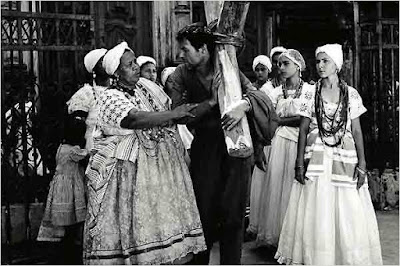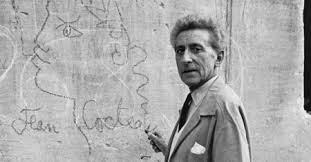Five Classics for Comfort
Enquanto houver cinema, haverá esperança. Este é o mantra que eu adotei nos últimos anos, quando a realidade começou a parecer um filme de terror e os tempos ficaram difíceis demais para nós, sonhadores. Em certo sentido, o cinema sempre me salvou de me afogar em minhas próprias emoções e desgostos. É isso: o cinema salva. Ele pode distrair, emocionar, confortar, maravilhar, inspirar. Quando eu era uma adolescente que sofria bullying, mais de 10 anos atrás, foi o cinema que me deu força para prosseguir, então por que o cinema não poderia fazer o mesmo pelo mundo todo durante uma pandemia? Para este momento, e para qualquer outro momento difícil, eu ofereço minha lista de cinco clássicos para dias difíceis:
As long as there is cinema, there is hope. This is the mantra I have adopted in the last few years, when reality started looking like a horror movie and times became too hard for us, dreamers. In a sense, cinema has always saved me from drowning in my own emotions and sorrows. That's it: cinema saves. It can distract, move, comfort, amuse, inspire. When I was a bullied teenager, over ten years ago, it was cinema that gave me strength to carry on, so why can't cinema do the same for the whole world during a pandemic? For this time, and for any other difficult time, I offer my top five comfort films:
Uma Semana (1920): Sinceramente, eu poderia ter escolhido qualquer filme de Buster Keaton. O homem que nunca ri, ironicamente, nunca falha em colocar um sorriso no meu rosto. “Uma Semana” foi o primeiro curta-metragem solo de Keaton – sem seu mentor no cinema, Roscoe Arbuckle – e é o meu favorito de seus curtas. Os recém-casados Buster e Sybil Seely recebem como presente de casamento uma casa montável que acaba ficando... peculiar. Hilário, adorável e surpreendente, “Uma Semana” é uma pequena dose de felicidade.
One Week (1920): Sincerely, I could have chosen any Buster Keaton film. The man who never laughs, ironically, never fails to put a smile on my face. “One Week” was Keaton's first solo short – without his movie mentor Roscoe Arbuckle – and it's my favorite. Newlyweds Buster and Sybil Seely receive as a wedding gift a DIY house that ends up being very... unique. Hilarious, lovely and surprising, “One Week” is a small doses of happiness.
“Uma Semana” foi recentemente exibido no Silent Comedy Watch Party, que foi a única coisa boa que este caos trouxe. Esta iniciativa traz curtas-metragens mudos exibidos com acompanhamento ao vivo do pianista Ben Model e comentários do historiador Steve Massa. A exibição semanal tem mantido a minha sanidade – e também a de muitos cinéfilos.
“One Week” was recently featured at the Silent Comedy Watch Party aka
the only good thing that this chaos brought. This initiative brings silent
shorts played with live music accompaniment by pianist Ben Model and commentary
by historian Steve Massa. The weekly party has kept me – and many more film
fans – sane.
Cantando na Chuva (1952): Há algum filme mais feliz do que
“Cantando na Chuva”? Eu acho que não. Eu imagino que as pessoas que trabalhavam
no cinema se desesperaram quando os filmes falados surgiram. É assustador
seguir em frente quando você não sabe o que o futuro lhe reserva, certo? Você
pode estar vivendo isso agora, ou já viveu, ou ainda vai viver, por isso tenha
certeza: o show precisa continuar. “Cantando na Chuva” nos ensina que devemos
nos adaptar como Don Lockwood, ter um amigo leal e esforçado como Cosmo Brown e
seguir nossos sonhos como Kathy Selden – e de preferência, mantendo um senso de
humor que nos permita zombar de um técnico de voz de vez em quando.
Singin' in the Rain (1952): Is there a
happier movie than “Singin' in the Rain”? I don't think so. I imagine people
working in movies got desperate when talkies became a thing. It's scary to go
on when you don't know what the future has in store to you, right? You may be
living this right now, or have lived this, or will live, so be sure: the show
must go on. “Singin' in the Rain” teaches us that we must adapt like Don
Lockwood, have a loyal and hardworking friend like Cosmo Brown and follow our
dreams like Kathy Selden – and hopefully, keeping a sense of humor that allows
us to mock a voice coach sometimes.
Meu Tio (1958): Esta belezinha francesa funciona
basicamente como um filme mudo. Monsieur Hulot, o tio, interpretado pelo
próprio diretor Jacques Tati, vive uma vida simples em um bairro pobre.
Enquanto isso, sua irmã, cunhado e sobrinho vivem em uma casa tecnológica e os
dois adultos pensam que podem ajudar Hulot a ter uma vida melhor. Isso leva ao
conflito entre o velho e o novo, e a várias gags visuais deliciosas. Além
disso, por causa deste filme eu sempre serei louca por uma fonte em forma de
peixe.
Mon Oncle (1958): This
French beauty basically works as a silent film. Monsieur Hulot, the uncle,
played by director Jacques Tati himself, lives a simple life in a poor neighborhood.
Meanwhile, his sister, brother-in-law and nephew live in a high-tech house and the
two adults think they can help Hulot have a better life. This leads to the
conflict between old and new, and a lot of delightful visual gags. Also,
because of this film I'll be forever obsessed with a fish-shaped fountain.
Descalços no Parque (1967): Assim como “Cantando na Chuva”,
este filme mostra que, depois que as dificuldades são superadas, vem a alegria.
Corie (Jane Fonda) e Paul (Robert Redford) são recém-casados e muito
diferentes: Corie é extravagante e espontânea, enquanto Paul é quieto e sério.
A tentativa deles de encontrar um equilíbrio conforme começam uma nova vida
juntos é uma graça, e a noite de aventuras com a mãe de Corie e com um vizinho
é brilhante. Você pode ler mais sobre “Descalços no Parque” AQUI.
Barefoot in the Park (1967): Just like “Singin' in the Rain”, this film shows that, after hardships are overcome, there comes bliss. Corie (Jane Fonda) and Paul (Robert Redford) are newlyweds and very different: Corie is extravagant and spontaneous, while Paul is quiet and serious. Their attempt to find balance as they begin a new life together is heartwarming, and their night out with Corie’s mother and a neighbor is priceless. You can read all my thoughts about “Barefoot in the Park” HERE.
Era uma Vez em Hollywood, a
trilogia: Sinto que estou
trapaceando duas vezes aqui porque estou escolhendo uma trilogia e esta
trilogia tem pedaços de muitos filmes. De qualquer forma, os musicais sempre,
sempre me deixam feliz. Eles foram minha fonte de esperança nos dias tristes da
minha adolescência, e eu tinha 17 anos quando vi pela primeira vez “Era uma Vez
em Hollywood” (1974). Este filme, assim como “Isso Também Era Hollywood” (1976)
e “Era uma Vez em Hollywood – Parte III” (1994), traz uma compilação de clipes
de musicais da era de ouro e também algumas cenas descartadas e material dos
bastidores. Ah, e eu mencionei que o segundo filme traz Fred Astaire e Gene
Kelly dançando juntos, 30 anos depois da primeira vez que eles fizeram ISSO?
Porque isso acontece e é incrível. Essa trilogia prova que o cinema é,
realmente, uma fábrica de sonhos e de esperança.
That's Entertainment! Trilogy: I feel like
I'm cheating twice here because I'm choosing a trilogy and this trilogy has
bits of many films. Anyway, musicals always, always make me happy. They were my
main source of hope in my sad teen years, and I was 17 when I first saw “That's
Entertainment! - Part 1” (1974). This film, and also Part II (released in 1976)
and Part 3 (released in 1994), brings a compilation of clips from Golden Age
musicals and also some unused footage and behind-the-scenes material. Oh, have
I said that Part II brings Fred Astaire and Gene Kelly singing and dancing
together, 30 years after the first time they did THIS? Because it does and it's
awesome. This trilogy show that cinema really is a dream – and hope – factory.
This is my contribution to the Classics for Comfort blogathon, hosted by the Classic Movie Blog Association.

































